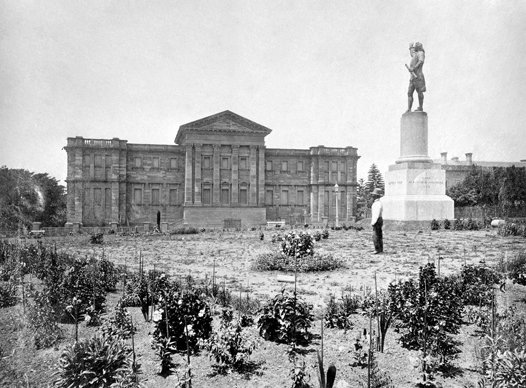1820s: Celebrating 190 years

Australian Museum 1877
Image: Copy held Australian Museum Archives AMS391/M897_4© Mitchell Library
That the idea took root and blossomed in rough and ready 1820s Sydney is impressive - and at least partly due to the humble platypus.
The European population of the fledgling colony of NSW was about 36,000 - less than half were free settlers and the rest convicts. The region was in drought and bushranger ‘Bold Jack’ Donohoe and his gang were holding up carts on the road from Sydney to Windsor.
The colony lacked culture, sophistication and infrastructure, but the region was abundant with incredible plants and animals. Surveyor Captain P.P King wrote of the recently explored Australian coast that ‘no country has ever produced a more extraordinary assemblage of indigenous productions – no country has proved richer than Australia in every branch of natural history’.
British naturalists were eager to secure a regular supply of these natural treasures. A senior Colonial Office official wrote to the newly installed Colonial Secretary and passionate naturalist, Alexander Macleay. He requested that specific items, including the eggs of the enigmatic platypus, be sent pronto from Sydney to London.

A curious creature: A platypus photographed by HJ Burrell (1914-1918)
Image: HJ Burrell© Australian Museum
Macleay obfuscated. As a keen collector himself he understood the need for new specimens at ‘home’ but at the same time his growing desire to promote science in this ‘new’ land was beginning to win out. He had too much administrative work, ‘there is not a day that I am not engaged with Public business from Daylight in the morning till 12 at night…’ and no-one at all to help with natural history collecting, ‘…there is actually not a single person in the Colony who is capable of affording me the least assistance.’
Unless there was some real government assistance given to develop the field of natural history in the Colony – the future supply of specimens home would be desultory. Macleay pushed the idea for a new scientific society and especially for a colonial ‘Museum’.
At the Colonial Office in London, Lord Bathurst responded positively. On March 30, 1827 he sent a despatch to Macleay’s boss, Governor Darling in Sydney, authorising him to spend £200 per annum on a ‘Publick Museum’ for the display of ‘rare and curious specimens of Natural History’.

Early image of Australian Museum exterior from Hyde Park.
Image: Mitchell Library© Mitchell Library
And so 190 years later the Australian Museum, the first museum in Australia, is still in the business of collecting and exhibiting rare and curious specimens. It’s also now making a crucial contribution through scientific research and global communication to the understanding of Australasia’s environment and people - and how this continent might best respond to the challenges facing our 21st century planet.












